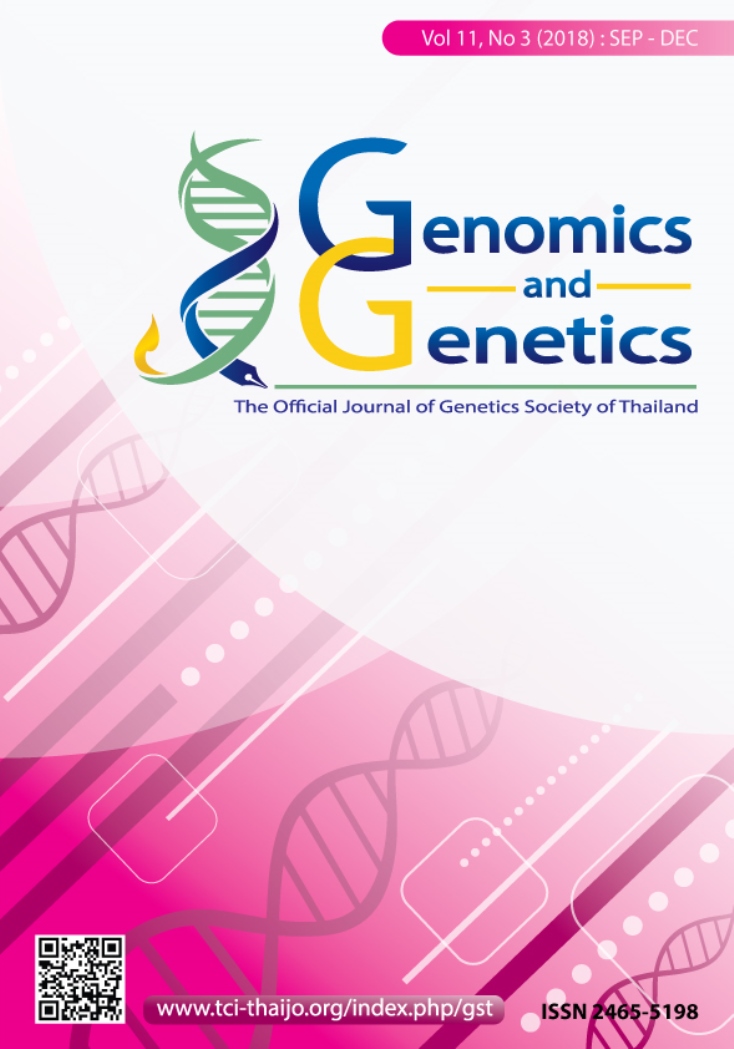Intron length polymorphism markers of flower developmental genes for genetic diversity and QTL mapping for oil yield in African oil palm
DOI:
https://doi.org/10.14456/gag.2018.5Abstract
The yield of oil from the palm (Elaeis guineensis Jacq.) is mainly a function of the number of bunches of fruit harvested and their weight. This is determined by the sex ratio and the ratio of mesocarp to the total dry mass of the bunch. In this study, 139 Intron Length Polymorphism (ILP) markers were developed from 47 Expressed Sequence Tags (ESTs) of genes implicated in flower developmental. All ILP primers successfully amplified genomic DNA with products of the expected size and 79 were found to be polymorphic in a diversity panel of 41 palms. The efficiency of the ILP markers was demonstrated by the average polymorphism information content of 0.34 and mean observed heterozygosity of 0.42. Genotypes were found to cluster into three major groups, based on pedigree and geographical origin. Thirteen polymorphic ILP markers developed from 11 candidate genes were mapped onto six published oil palm linkage groups corresponding to six oil palm chromosomes. Quantitative trait loci mapping for traits related to oil yield identified the ILP marker developed from AGAMOUS of a MAS-box gene. ILP markers developed from genes involved in flower development in the oil palm provide a powerful tool for the identification of functional markers that are associated with traits determining oil yield.


